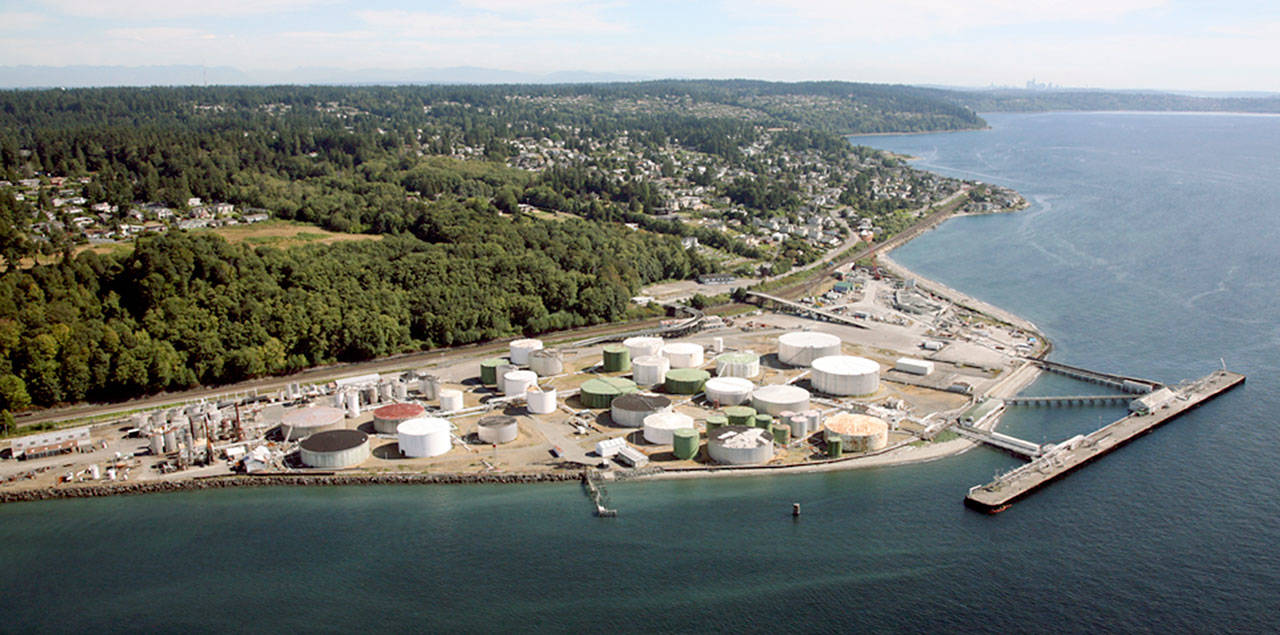WOODWAY — A high-rise condo development at Point Wells won’t be moving forward. Not for now, at least.
The Snohomish County hearing examiner ruled Friday that plans for remaking Point Wells fall short of land-use requirements in several ways. That means that planners can stop processing the permit application without wading into environmental impact studies.
In a major setback for developer BSRE Point Wells, the examiner denied an attempt to double allowable building heights to 180 feet. That affects almost half of the 46 proposed buildings, which exceed 90 feet.
“The record lacks any evidence to support a finding or conclusion that the additional height is necessary or desirable from a public, aesthetic, planning, or transportation standpoint,” examiner Peter Camp wrote.
Camp’s decision came a day before the permit application was set to expire. He declined to extend the deadline.
“It’s obviously disappointing,” said Gary Huff, an attorney representing BSRE. “We need to continue digesting it and consult with the client, but we’re not going away.”
The developer can ask the examiner to reconsider his decision. Camp’s ruling can be appealed to Superior Court.
“I’m quite certain there will be an appeal,” Huff said.
Whether the project might change, he said, is “part of the discussion that will be happening.”
The vision for remaking Point Wells was ambitious. BSRE sought to turn a 60-acre waterfront industrial site into a upscale community of highrises. The tallest building would reach 17 stories. The land is in unincorporated Snohomish County, partially surrounded by Woodway.
There’s a marine fuels depot there now and an asphalt plant. By embarking on the complicated project, BSRE had wagered that the views of Puget Sound and the Olympic Mountains might make a better spot for condominiums and shops. Plans also called for a public pier and an open-air amphitheater.
The company is a subsidiary of Blue Square Real Estate and an energy conglomerate headquartered in Israel. It submitted its initial permit application to the county in 2011.
After seven years and three deadline extensions, county planners appeared to lose patience.
In unusually blunt terms, they asked the examiner earlier this year to turn down the project.
Access to high-capacity transit, such as a highway or a commuter-rail station, was a key sticking point.
Railway tracks run through the site, carrying Sounder commuter trains. Planners said the tracks, on their own, weren’t enough.
Camp agreed. The examiner was unconvinced by BSRE’s suggestion of building a new Sounder platform there.
“Based on the record, any claim that Sound Transit will operate a commuter rail stop at Point Wells is speculative at best,” he wrote.
The only way to reach Point Wells by land, for now, is a two-lane road that passes through Shoreline and then crosses the county line. The developer proposed building a second road through the town of Woodway, where most homes are on large lots and have an average assessed value of around $1.3 million.
Camp’s decision faulted the developer’s plans for placing proposed buildings too close to marine waters. He said there was unfinished work to address landslide and earthquake hazards. The property backs up to a 200-foot tall bluff to the east. It’s also situated on a type of soil that would be less stable during an earthquake because of a process called liquefaction.
Camp did agree with BSRE on some points. He said that requests for variances — exceptions to normal building rules — aren’t in themselves reason enough to deny a project. He deemed plans for a shoreline esplanade adequate. And he said missing parts of BSRE’s habitat-management plan could be fixed.
BSRE’s representatives have said they can address the county’s concerns, given more time. They contend early progress on Point Wells was stalled by three years of court battles. Another obstacle they’ve cited was the amount of time it has taken the county to provide feedback on its plans.
Friday’s ruling sympathized with the court delays. But Camp went on to highlight instances where the developer could have supplied crucial information more quickly, but did not. The time it took to identify the ordinary high-water mark was “a glaring example,” in his words. The high-water mark determines the maximum footprint for a waterfront development. BSRE could have located it before submitting its application, the examiner said, but didn’t come through until late this spring.
The ruling followed several days of testimony in May.
BSRE reports spending more than $10 million on the project to date.
Noah Haglund: 425-339-3465; nhaglund@herald net.com. Twitter: @NWhaglund.
Talk to us
> Give us your news tips.
> Send us a letter to the editor.
> More Herald contact information.

























